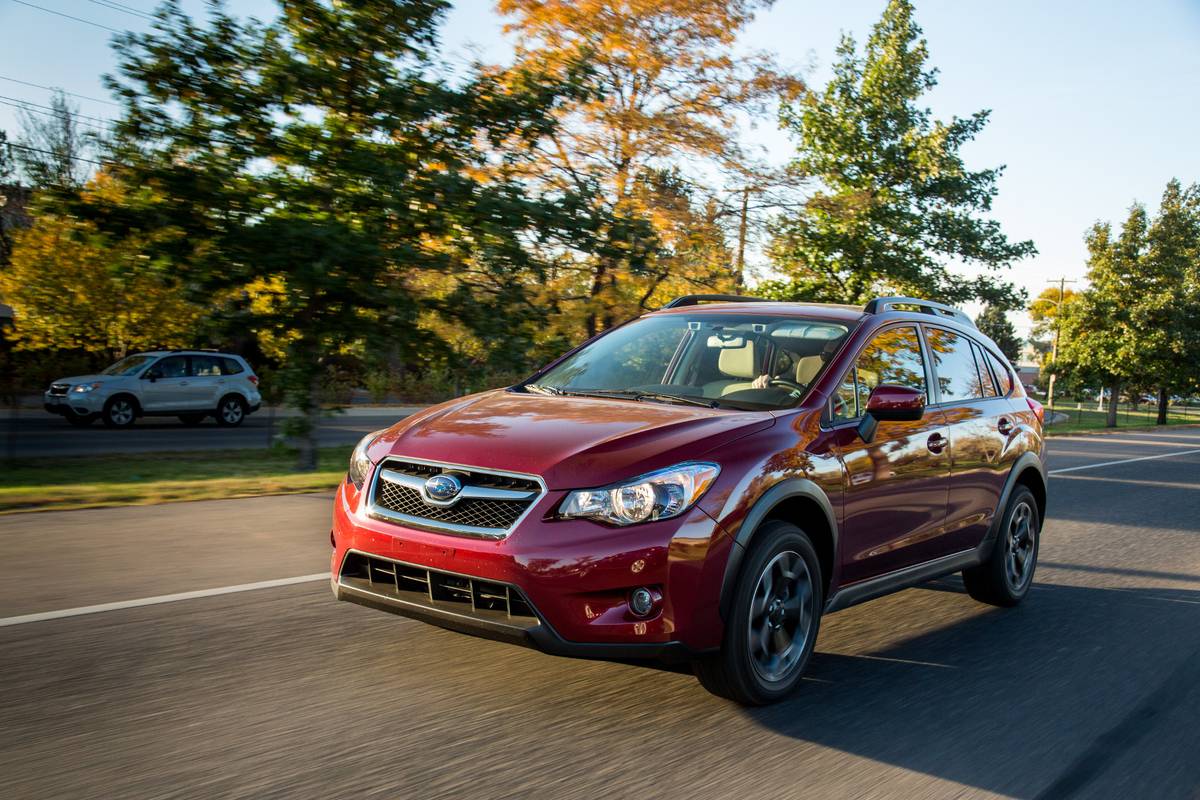Subaru EyeSight Shows Promise for Reducing Crashes With Cyclists

As gas prices, congestion and climate concerns push more commuters toward bicycles, cars and bikes tangle more often. Nearly 1,000 bicyclists were killed in collisions with cars in 2021, a 50% increase since 2010. Collision-warning and automatic emergency braking systems can mitigate such crashes, and new research from the Insurance Institute for Highway Safety says Subaru’s EyeSight system reduced one type of crash involving bicyclists by 29%.
Related: What Is Subaru EyeSight?
Good crash analysis is a nuanced science. It’s not just that a crash happens, but the conditions of that crash that matter. Was the cyclist traveling with traffic, against it or crossing the road? Was it day or night, clear or rainy? Was either vehicle turning? These variables all help to understand the effectiveness of crash-prevention systems — and help automakers refine them.
The 29% reduction achieved by Subaru EyeSight was in crashes in which a bicycle is struck from behind by a vehicle traveling in the same direction, which is known as a parallel crash. To arrive at this conclusion, IIHS compared rates of police-reported crashes between Subarus equipped with EyeSight to rates for the same models without the system, using data from 16 states whose reporting protocols provide sufficient information to make the distinction and controlling for other variables (such as state and driver age and gender). Data were from 2014-20, and IIHS focused on EyeSight because it was among the earliest systems capable of detecting cyclists, and because whether or not a vehicle is equipped with it can be determined from the vehicle identification number, which streamlined the data-gathering process.
Parallel crashes are more likely to be fatal, but crashes with a bike crossing the roadway account for the majority of car-bike collisions. In such crashes, IIHS found EyeSight to be less effective, accounting for a reduction of just 5%. The agency also found that EyeSight reduced overall crashes between Subarus and bicycles by 9%. While study authors note these figures aren’t statistically significant, on a personal level, not being hit by a car must be pretty significant to those individuals who otherwise would have been.
Models involved in the study were equipped with first- and second-generation EyeSight. Subaru began rolling out the system’s third generation for the 2022 model year and now offers it on the Ascent, Forester, Legacy, Outback and WRX. The 2023 Ascent, Legacy and Outback also have a third camera intended to offer a wider field of vision, but there’s not enough data yet to draw any conclusions about improved efficacy.
Road safety is a war with many fronts. As Jessica Cicchino, vice president of research at IIHS and the author of the study, notes, “It will be a long time before every vehicle in the fleet is equipped with such a system.” In the meantime, every driver on the road can do their best to ensure they are doing what crash-prevention technologies are intended to help us do: Pay attention and slow down.
More From Cars.com:
- Subaru Expands EyeSight as New Study Shows Effectiveness
- Study: Most Mid-Size SUVs Lack Rear Passenger Protection
- Here’s Every Car That Earned an IIHS Top Safety Award for 2023
- IIHS Small Overlap Front Crash Test Makes Impact, Study Shows 12% Reduction in Frontal Crash Fatalities
- More Safety News
Related Video:
Cars.com’s Editorial department is your source for automotive news and reviews. In line with Cars.com’s long-standing ethics policy, editors and reviewers don’t accept gifts or free trips from automakers. The Editorial department is independent of Cars.com’s advertising, sales and sponsored content departments.
Featured stories



